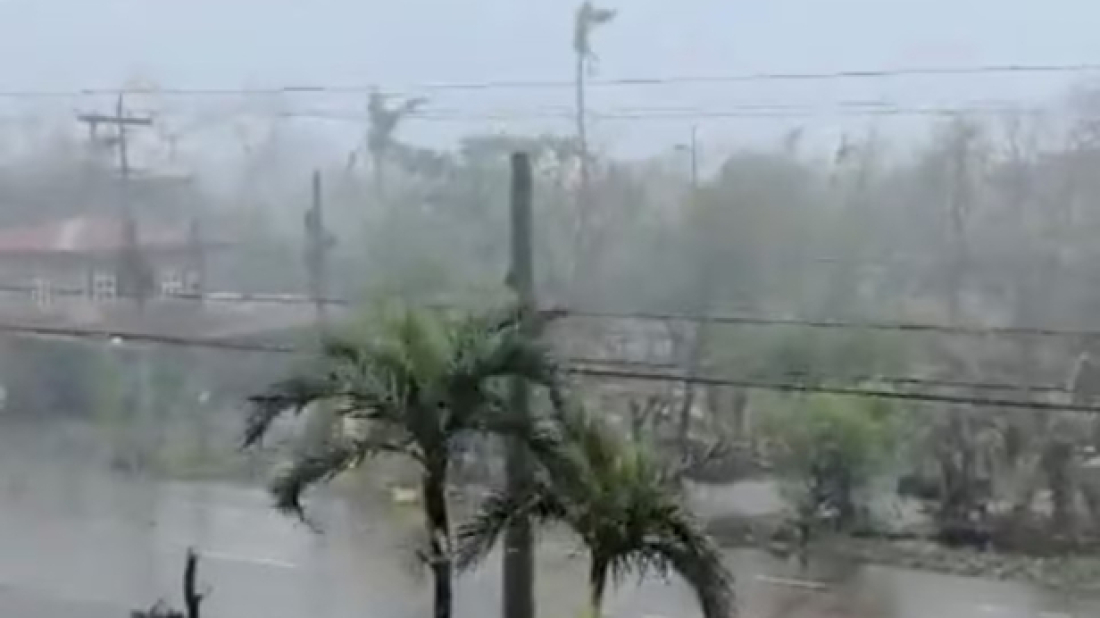Iran vows strong response to Trump’s threat, calls for global condemnation
Iranian President Masoud Pezeshkian warned that Tehran’s answer to any aggression will be decisive and “discouraging” and Foreign Minister Abbas...

Typhoon Usagi weakened Friday after battering the northern Philippines, uprooting homes and forcing evacuations. As authorities assess the damage, they are preparing for Typhoon Man-yi, which is intensifying and could strike Manila by Sunday as a super typhoon, bringing more danger to the region.
Typhoon Usagi, known locally as Ofel, weakened significantly by Friday after causing widespread destruction in the northern Philippines. The storm, which made landfall in the coastal town of Baggao, Cagayan province on Thursday afternoon, uprooted homes and displaced residents. Authorities are now bracing for another powerful storm, Typhoon Man-yi, expected to impact Manila and surrounding regions over the weekend.
This was the 15th cyclone to strike the Philippines this year. Officials are already focused on Typhoon Man-yi, which continues to strengthen in the western Pacific. The Philippine Atmospheric, Geophysical and Astronomical Services Administration is the National Meteorological and Hydrological Services agency of the Philippines (Pag-asa) forecasts that Man-yi could become a super typhoon by Sunday.
While no fatalities have been reported from Usagi, thousands of residents in at-risk areas were evacuated ahead of the storm. In Cagayan province, Rueli Rapsing, head of the local disaster relief office, reported that damage assessments were ongoing.
“More homes have been damaged, either partially or completely, following Typhoon Marce,” Rapsing said on Friday. "Our teams are still evaluating the full extent of the destruction."
Preemptive evacuations in the path of Typhoon Man-yi will begin on Friday. Pag-asa said that the storm’s center was located about 795 kilometers east of Guian, a municipality in Eastern Samar. Authorities have warned of potential storm surges reaching up to 3 metres in coastal areas of central provinces.
Usagi is the sixth storm to impact the Philippines this month, primarily affecting Luzon. Earlier this month, Typhoons Trami and Kong-rey caused devastating floods and landslides, claiming 162 lives, with 22 people still missing, according to government data.
The Philippines is experiencing a particularly active typhoon season, as the western Pacific is seeing an unusual number of storms. The Japan Meteorological Agency reported that four storms are simultaneously active in the region, a phenomenon not observed since 1951. On average, the Philippines faces about 20 tropical storms each year, bringing heavy rains, strong winds, and landslides that frequently cause loss of life.
The Russian radio station known as 'Doomsday Radio' (or UVB-76) unexpectedly began playing ‘Swan Lake’, music from a ballet composition. The last time this was done was during the deaths of Soviet-era leaders and the 1991 coup.
Protests in Iran over soaring prices and a plunging rial have spread to universities in Tehran, as students join shopkeepers and bazaar merchants in demanding government action. With inflation above 42% and the rial at record lows, unrest continues to grow across the country.
As Russia’s war in Ukraine enters its fourth year, rising casualties, economic struggles, and mounting unrest expose cracks in society. Despite Kremlin propaganda, frustration is growing as more Russians question the government’s narrative, according to The Washington Post.
The head of Yemen’s Presidential Council, Rashad al-Alimi, has ordered all forces linked to the United Arab Emirates to leave Yemen within 24 hours.
European leaders held talks on Ukraine after Russia said it would revise its negotiating position, citing an alleged Ukrainian drone attack that Kyiv has firmly denied.
Türkiye’s Zero Waste Foundation has released the Zero Waste Encyclopaedia in Turkish and English, ahead of hosting COP31 in 2026, providing a comprehensive resource on global zero waste practices.
Widespread flash flooding and mudflows have hit Southern California after heavy rain, prompting evacuation orders and warnings for motorists to stay off roads, authorities said.
Dense smog has forced authorities in Pakistan’s Punjab province to shut several major motorways on Tuesday (16 December), stranding commuters as visibility dropped sharply and Lahore’s air quality reached hazardous levels.
At least 37 people have been killed in flash floods triggered by torrential rain in Morocco's Atlantic coastal province of Safi, Moroccan authorities said on Monday (15 December).
Climatologists say Poland has logged its warmest December in 74 years, with 2025 continuing a run of above-average temperatures and repeated national records.
You can download the AnewZ application from Play Store and the App Store.

What is your opinion on this topic?
Leave the first comment